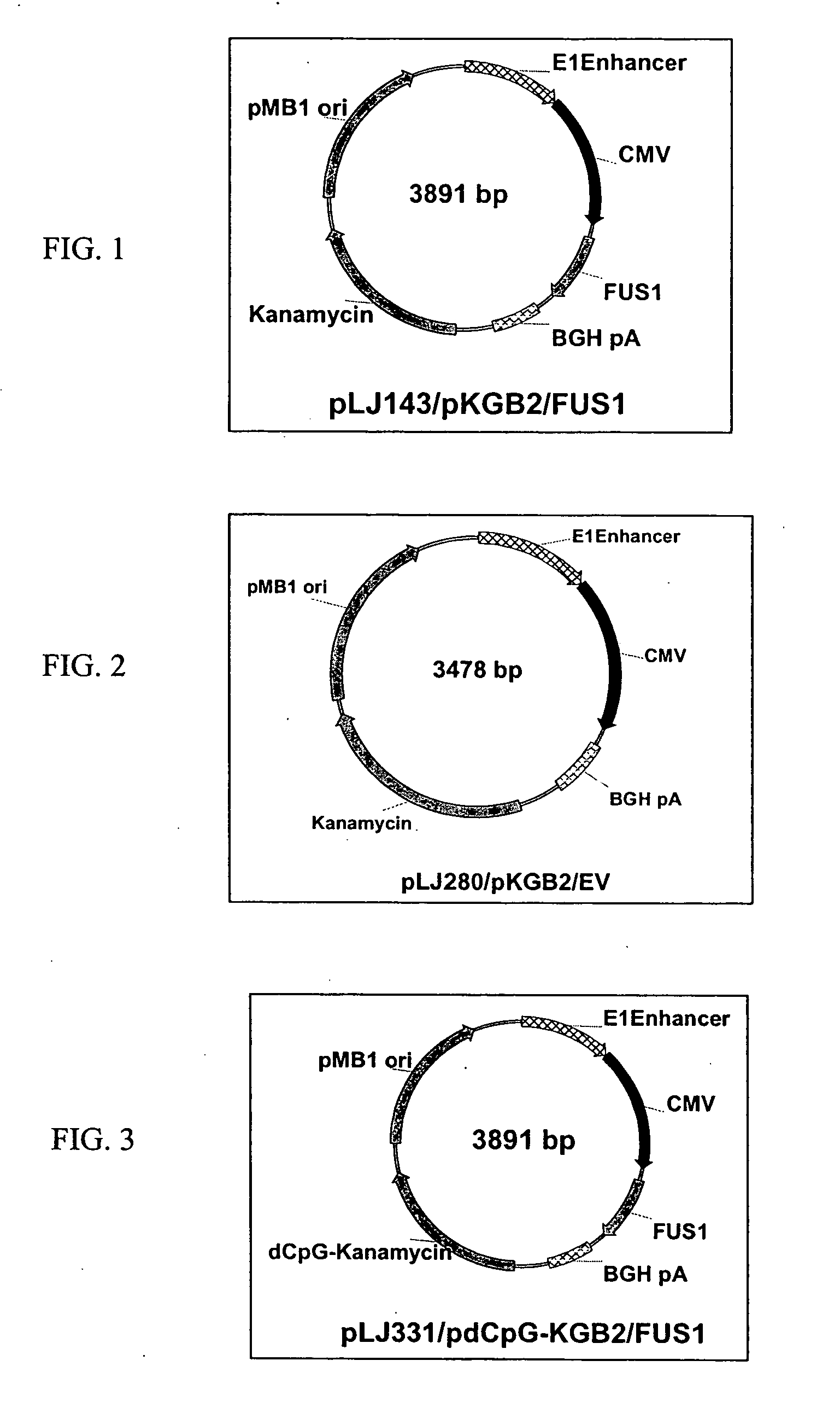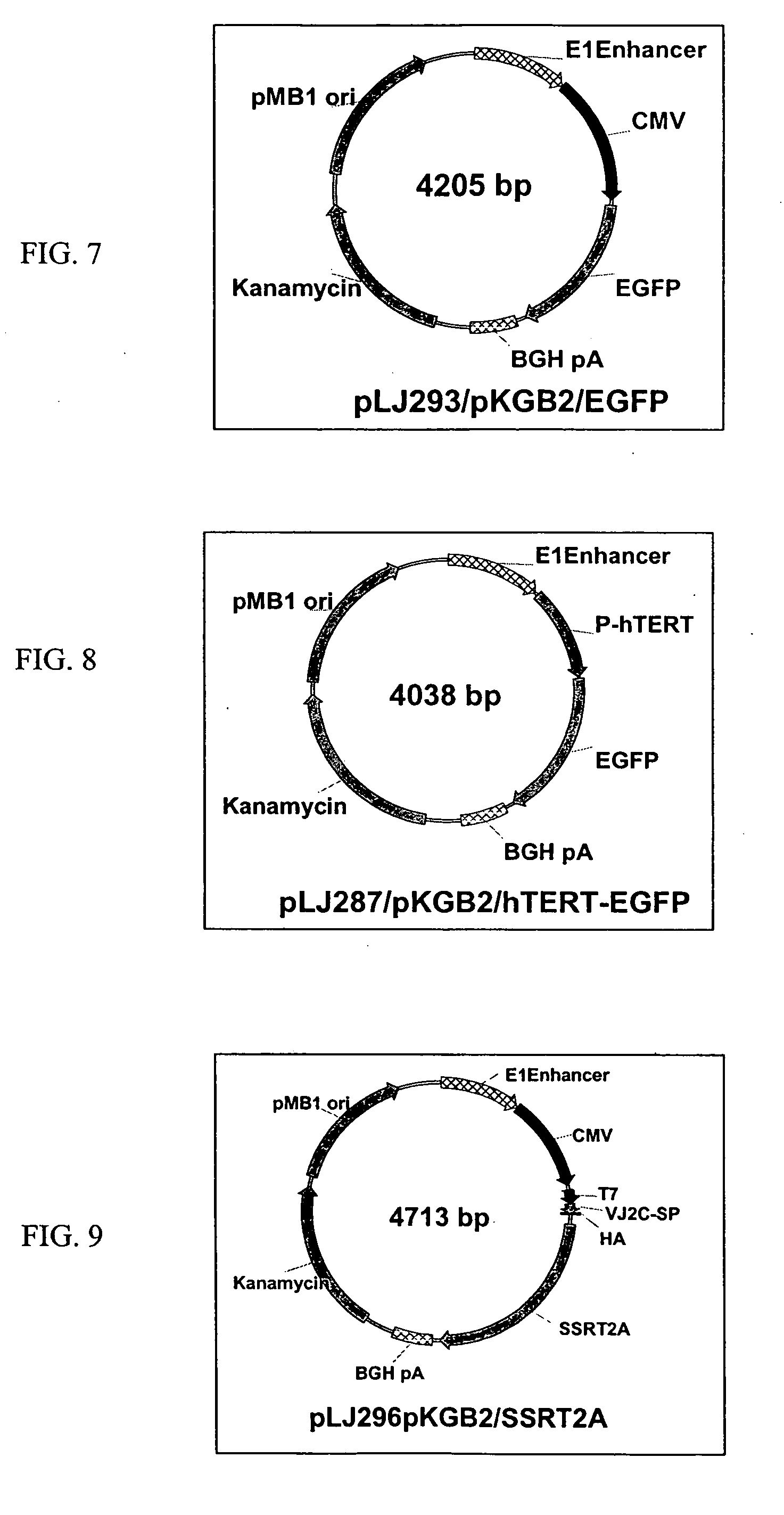Novel hTMC promoter and vectors for the tumor-selective and high-efficient expression of cancer therapeutic genes
a cancer gene and promoter technology, applied in the field of molecular biology, cancer biology, gene therapy, can solve the problems of htert promoter, weak transcription promoting strength of htert promoter, affecting the use of gene therapy, etc., to achieve high tumor specificity, promote highly efficient expression of transgenes, and improve the function of tissue-selective promoter
- Summary
- Abstract
- Description
- Claims
- Application Information
AI Technical Summary
Benefits of technology
Problems solved by technology
Method used
Image
Examples
example 1
A Novel hTERT-mini-CMV (hTMC) Promoter-Mediated Tumor-Selective and High-Efficient Expression of Reporter and Tumor Suppressor Genes for Molecular Cancer Therapy
1. Construction of hTMC Promoter.
[0250] Certain novel chimeric promoters, including the hTERT-mini-CMV (hTMC) promoter, were engineered by optimally fusing essential hTERT promoter sequence with minimal CMV promoter elements. PCR was used to amplify the 463 bp of the hTERT regulatory region and 147 bp of minimum TATA box and transcription initiation region from CMV promoter. The hybrid hTERT and CMV promoters were optimized by testing various combinations and their performance in terms of tumor-selectivity and transcription promoting strength in normal and tumor cell transfectants. Using this optimized novel hTMC promoter, both high tumor-specificity and high transgene expression were achieved in vitro and in vivo, as demonstrated here using an hTMC-EGFP reporter system in vivo.
[0251] 2. Construction of hTMC-containing P...
example 2
A Novel Synthetic hTERT-Mini-CMV Chimera Promotor-Driven Tumor-Selective and High-Efficiency Expression of Transgene for Systemic Cancer Gene Therapy
[0293] One of the major obstacles to a successful cancer gene therapy is the lack of an effective systemic delivery system that can be specifically targeted to primary and metastatic tumors. The hTERT promoter has been cloned and showed to be capable of targeting transgene expression in tumors but not in the normal cells. However, the weak transcription-promoting strength of hTERT promoter, like most other intrinsic mammalian promoters, has hampered its direct use for cancer gene therapy. To circumvent these problems, a novel chimera hTERT-mini-CMV (hTMC) promoter has been developed that was engineered by optimally fusing essential hTERT regulatory sequence with minimal CMV promoter elements. Various human cancers and normal cells were transfected with various EGFP-constructs, in which EGFP expression is driven by either the original C...
PUM
| Property | Measurement | Unit |
|---|---|---|
| diameter | aaaaa | aaaaa |
| time | aaaaa | aaaaa |
| time | aaaaa | aaaaa |
Abstract
Description
Claims
Application Information
 Login to View More
Login to View More - R&D
- Intellectual Property
- Life Sciences
- Materials
- Tech Scout
- Unparalleled Data Quality
- Higher Quality Content
- 60% Fewer Hallucinations
Browse by: Latest US Patents, China's latest patents, Technical Efficacy Thesaurus, Application Domain, Technology Topic, Popular Technical Reports.
© 2025 PatSnap. All rights reserved.Legal|Privacy policy|Modern Slavery Act Transparency Statement|Sitemap|About US| Contact US: help@patsnap.com



